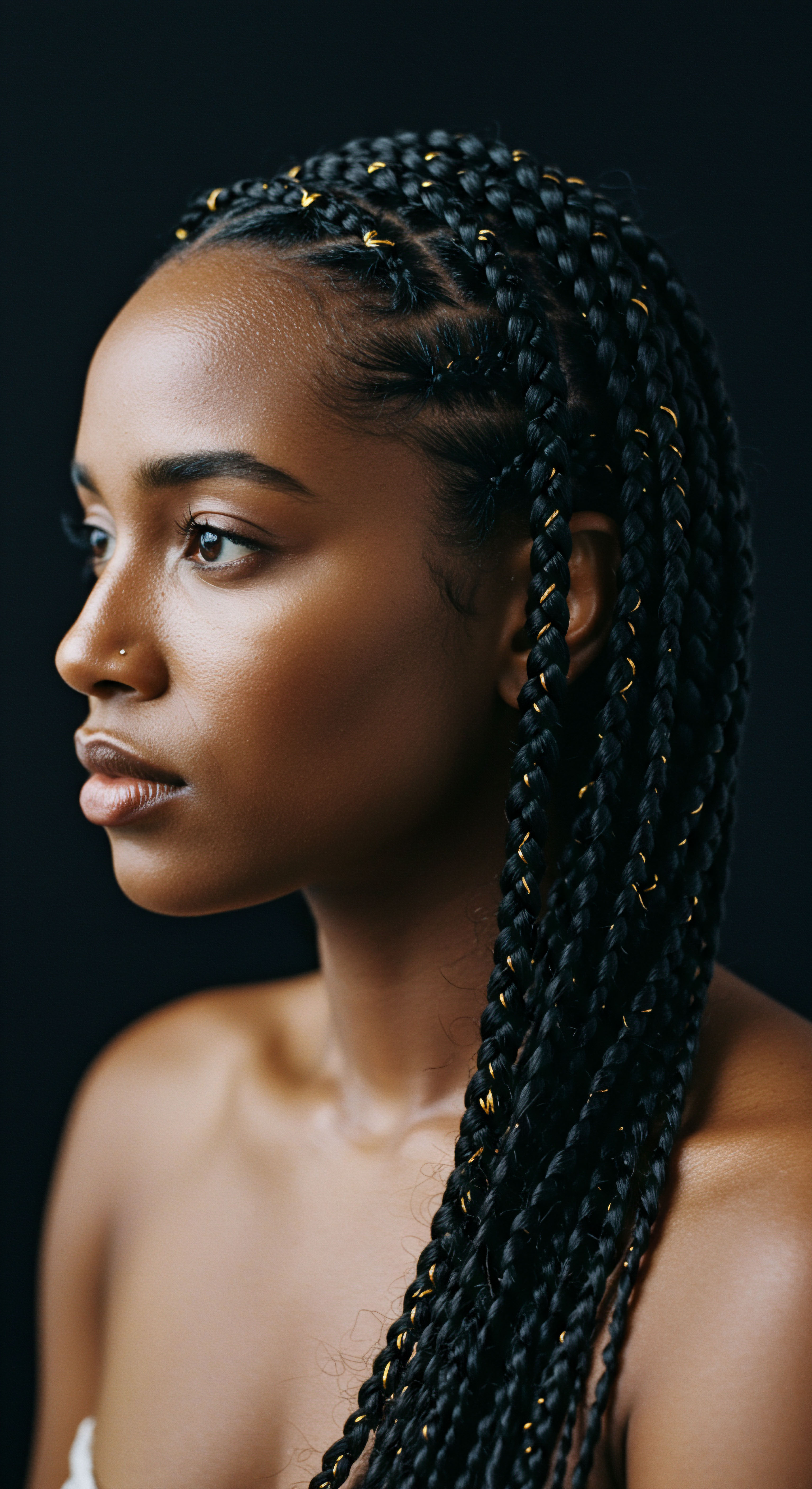
Roots
The quiet rustle of leaves, the deep hum of ancestral voices, and the steady rhythm of life itself seem to find echoes in the very strands that crown us. For those of us connected to textured hair, particularly its African lineage, a glance at ancient braids reveals far more than a style choice. It speaks of a profound language, a silent conversation held between generations, across landscapes, and even with the spirit world.
These ancient forms, often seen today as mere aesthetic expressions, were once the very bedrock of identity, communication, and spiritual connection for countless African communities. They hold within them the essence of a history written not on parchment, but on the scalp, in patterns that told stories only those within the culture could truly read.

A History Written on the Scalp
The origins of African hair braiding stretch back thousands of years, with archaeological findings and rock paintings suggesting practices as early as 3500 BCE. These early depictions, found in regions like the Sahara desert, reveal that the act of braiding was present long before written records began to document human societies. The earliest evidence of African braiding dates back nearly 5,000 years to ancient Africa, with statues and hieroglyphs from ancient Egypt often portraying figures with elaborately braided hair. The Himba people of Namibia, for example, have maintained practices that involve red, pigmented strands, which have been around for as long as their need for sun protection.
This longevity points to a practice deeply embedded in daily life, transcending simple adornment. It suggests that braiding was a foundational element of how societies functioned, how individuals were perceived, and how heritage was passed along. The very act of creating these styles was a communal affair, a time for sharing, teaching, and strengthening bonds within families and communities.
Ancient African braids were a silent, powerful language, conveying deep meanings about identity, social standing, and spiritual connection.

What Early Evidence Reveals About African Braids?
Archaeological evidence from ancient Egypt, the Kingdom of Kush, and various West African cultures demonstrates that these hairstyles served as expressions of power, spirituality, and social cohesion. In ancient Egypt, hair was a visible marker of hierarchy and divinity, with elaborate wigs and braided styles often adorned with gold, beads, or other precious materials, signifying wealth, religious devotion, and a direct link to deities. The more elaborate and decorated the hairstyle, the higher one’s social standing.
Beyond Egypt, the Kushites valued tight, coiled braids and headpieces adorned with jewels, feathers, and metals, reflecting both tribal identity and religious beliefs. These practices were not isolated; across the continent, diverse groups developed their own distinct styles, each carrying specific meanings.
- Cornrows ❉ One of the oldest and most recognizable styles, with depictions dating back to 3000 BCE in Africa. They indicated tribal affiliation, social standing, and even personal identity.
- Bantu Knots ❉ Originating from the Bantu people of Southern Africa, these knots symbolized strength and unity.
- Fulani Braids ❉ From the Fulani people of West Africa, these often included beads and cowrie shells, representing wealth and cultural pride.
These styles were not merely about aesthetics; they were a profound form of communication, a visual language that spoke volumes without a single uttered word.
| Style Cornrows |
| Origin Region Sahara Desert, West Africa |
| Earliest Known Date 3500 BCE |
| Style Box Braids |
| Origin Region South Africa |
| Earliest Known Date 3500 BCE |
| Style Halo Braid |
| Origin Region Africa (general) |
| Earliest Known Date 1st Century CE |
| Style Ghana Braids |
| Origin Region Ghana |
| Earliest Known Date 500 BCE (hieroglyphics/sculptures) |
| Style Bantu Knots |
| Origin Region Southern Africa (Zulu people) |
| Earliest Known Date Ancient times |

Ritual
As we move from the foundational understanding of ancient African braids, a deeper appreciation emerges when we consider the very act of their creation. The braiding process itself was seldom a solitary or rushed endeavor. It was a practice imbued with a sense of ceremony, a deliberate unfolding of tradition and connection.
The hands that braided were not just styling hair; they were performing a ritual, passing along wisdom, offering comfort, and affirming belonging. This shift from mere physical manipulation to a meaningful practice speaks to the heart of what these styles truly meant in daily life.
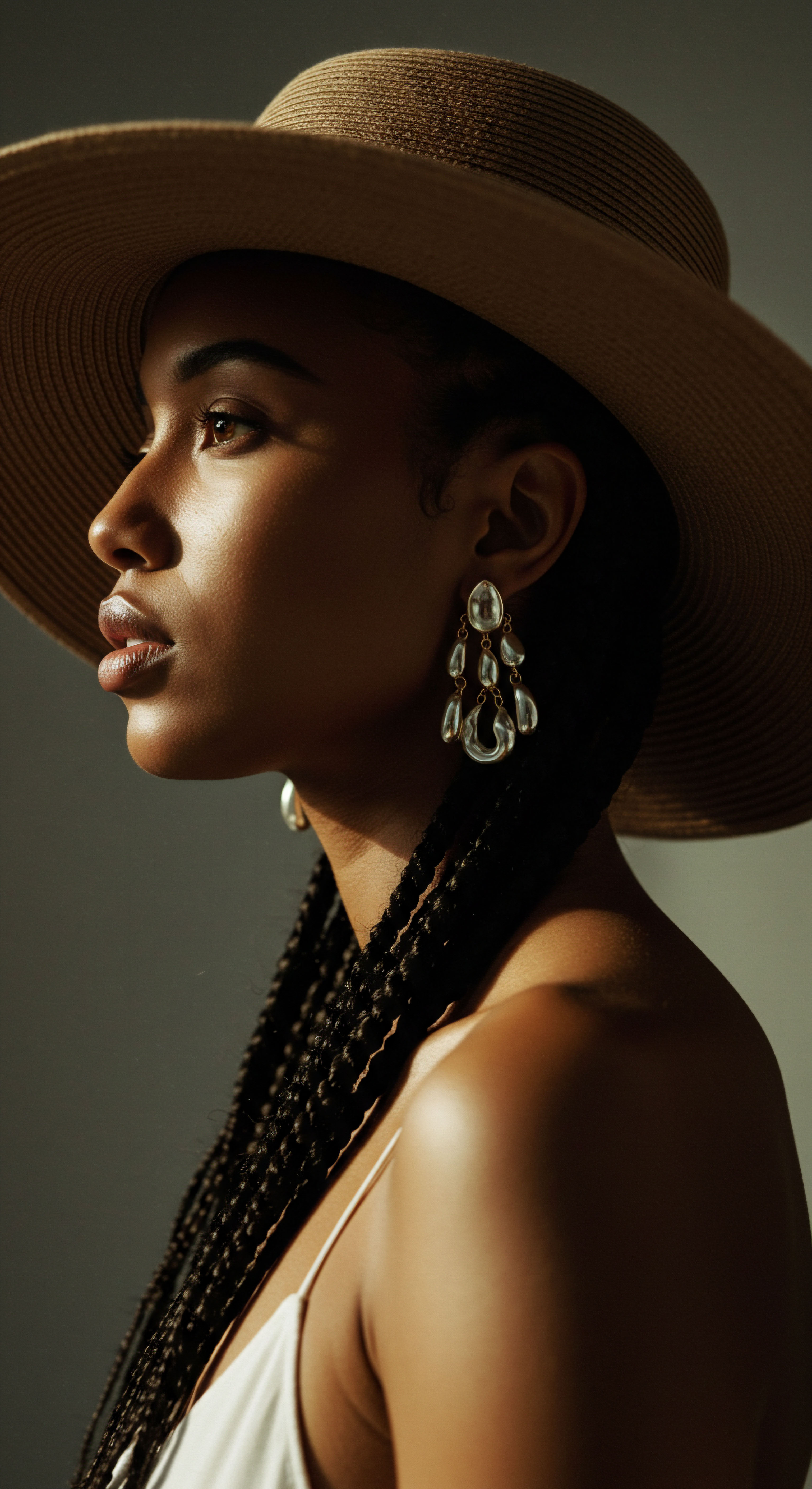
What Daily Practices Defined Ancient Braiding Rituals?
The preparation for braiding was often as significant as the finished style. It involved careful cleansing, oiling, and sometimes the application of natural substances like clay or herbs, not only for health but also for spiritual purification. These preparations were integral to the holistic approach to hair care, where the physical wellbeing of the hair was seen as interconnected with the individual’s overall state of being. The Maasai people, for example, had specific beliefs regarding hair and spiritual energy, with rites of passage involving hair shaving and re-growing to symbolize new life stages and spiritual re-affirmation.
The act of braiding itself was typically a communal affair, often taking hours or even days to complete, depending on the complexity of the style. These lengthy sessions were not seen as burdensome; rather, they provided invaluable opportunities for social interaction, storytelling, and the transmission of cultural knowledge from elders to younger generations. Mothers would bond with their daughters, sharing not only the technical skill but also the oral histories and traditions of their people.
In Sudan, braiding events were held on specific days, inviting female neighbors and friends to participate, sometimes for two to three days for matrimonial preparations, filled with chatter and singing. This shared experience fostered strong social bonds and a deep sense of community belonging.
The creation of ancient African braids was a profound ritual, intertwining communal bonding, ancestral wisdom, and spiritual care.

How Did Braiding Practices Link to Life Stages?
Braiding practices were often intrinsically linked to various life stages and social roles. For young girls, learning to braid was a rite of passage, signifying their transition to womanhood. The intricate styles they would then wear, often more elaborate than those of children, served as a physical marker of their new social standing.
Similarly, braids could signify marital status, fertility, or rank within the community. A woman’s style could communicate whether she was single, married, or even in mourning.
The selection of specific patterns and the addition of adornments like beads, cowrie shells, or gold thread further enhanced these communications. These embellishments were not merely decorative; they held symbolic weight, sometimes indicating wealth, social standing, or spiritual protection. The process of braiding was a dynamic expression of identity, constantly adapting to reflect an individual’s changing life circumstances within the community.
- Ceremonial Braiding ❉ Often marked rites of passage, such as puberty, marriage, or childbirth.
- Communal Grooming ❉ Strengthened social bonds and facilitated the sharing of stories and wisdom.
- Protective Styling ❉ Provided practical benefits like sun protection and reduced breakage, crucial for hair health in diverse climates.
The very act of maintaining these styles was a continuous engagement with one’s heritage and community. It was a tangible connection to the past, kept vibrant through consistent practice and shared moments.
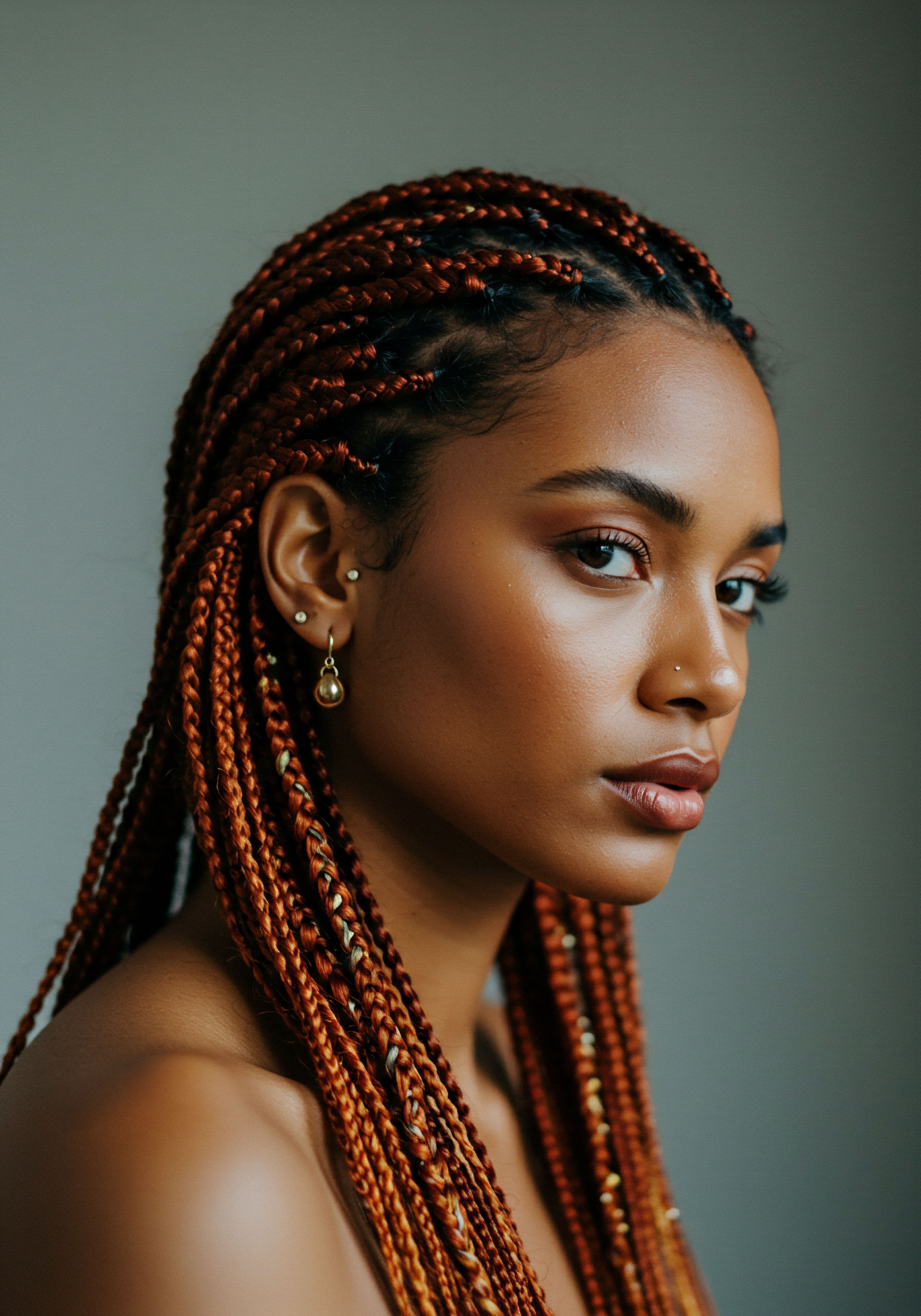
Relay
Stepping into the deeper currents of what ancient African braids truly symbolized calls for a look beyond the visible. It beckons us to consider the intricate interplay of social structure, spiritual conviction, and even clandestine communication that these seemingly simple strands held. This section delves into the profound, multi-dimensional layers of meaning, revealing how hair became a living, breathing archive of cultural intelligence and communal survival. Here, the subtle language of braided patterns unfolds, demonstrating a sophistication that transcends mere personal expression to become a testament to collective identity and strategic thought.
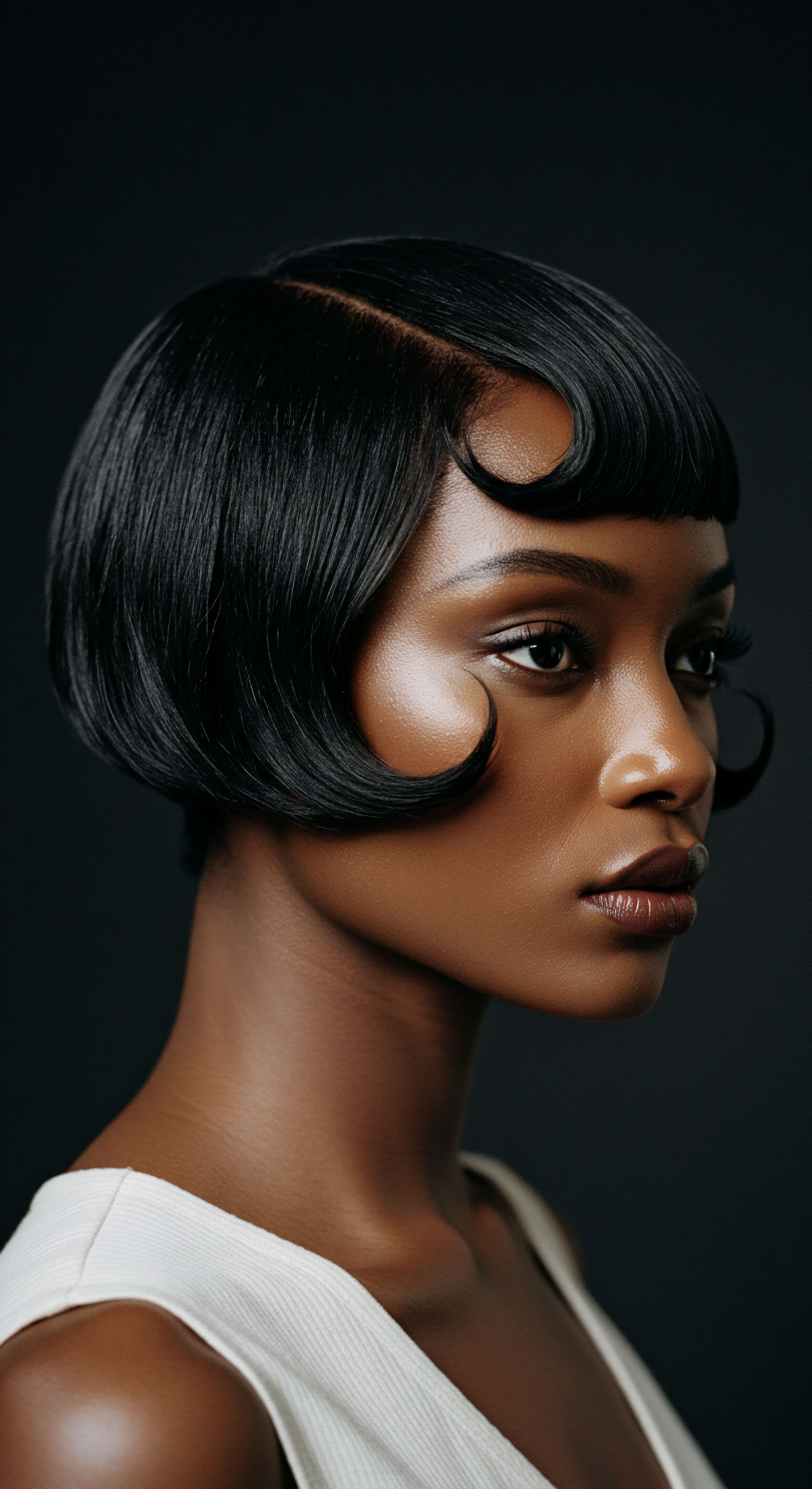
How Did Braids Map Social Structures and Identity?
In pre-colonial African societies, hairstyles served as a visual lexicon, a dynamic system of symbols that conveyed a person’s standing, affiliations, and life journey. The specific patterns, the direction of the braids, and the adornments chosen could communicate a wealth of information. A person’s hairstyle could indicate their age, marital status, wealth, religious affiliation, occupation, or even their tribal identity.
For instance, in some cultures, women wore distinct braids when single and different styles when married. Young Maasai warriors had specific hairstyles to mark their initiation into the warrior class, symbolizing strength and bravery.
The complexity and artistry of a braid pattern could also signify a person’s social rank or status within the community. Elite individuals and royalty often sported more elaborate and adorned styles, setting them apart from common folk. The Yoruba people of Nigeria, for example, crafted complex designs to honor ceremonial and spiritual occasions, with skilled braiders holding a respected position in society. This level of detail in hair design was not arbitrary; it was a deliberate and universally understood aspect of social interaction, a silent agreement on how identity was presented and perceived.

Could Braids Conceal Covert Messages and Survival Strategies?
Perhaps one of the most compelling and historically significant aspects of ancient African braids lies in their use as a means of covert communication, particularly during the transatlantic slave trade. Stripped of their languages and cultural practices, enslaved Africans ingeniously adapted their hair traditions into a powerful tool for resistance and survival.
In a truly remarkable act of defiance and ingenuity, certain cornrow patterns were used to create maps and directions for escape routes. For example, in Colombia, enslaved women, led by figures like Benkos Biohò, braided patterns that mimicked the roads and paths leading to freedom, often to hidden settlements known as Palenques. These styles could even indicate where to find water or other vital resources along the escape journey. Moreover, these tightly woven braids served as discreet hiding places for gold nuggets, seeds, or even small tools, providing sustenance and aid for those seeking liberty.
Beyond their aesthetic beauty, ancient African braids served as vital maps and silent conduits for resistance during the transatlantic slave trade.
This practice, though difficult to verify through traditional written archives due to its clandestine nature, is a powerful testament to the resilience and resourcefulness of enslaved African communities, preserved through oral histories. It represents a profound example of how cultural practices, seemingly innocuous, could be transformed into sophisticated instruments of survival and resistance against unimaginable oppression. This use of hair as a living, dynamic map offers a unique lens through which to view the historical agency of those who endured the horrors of slavery.
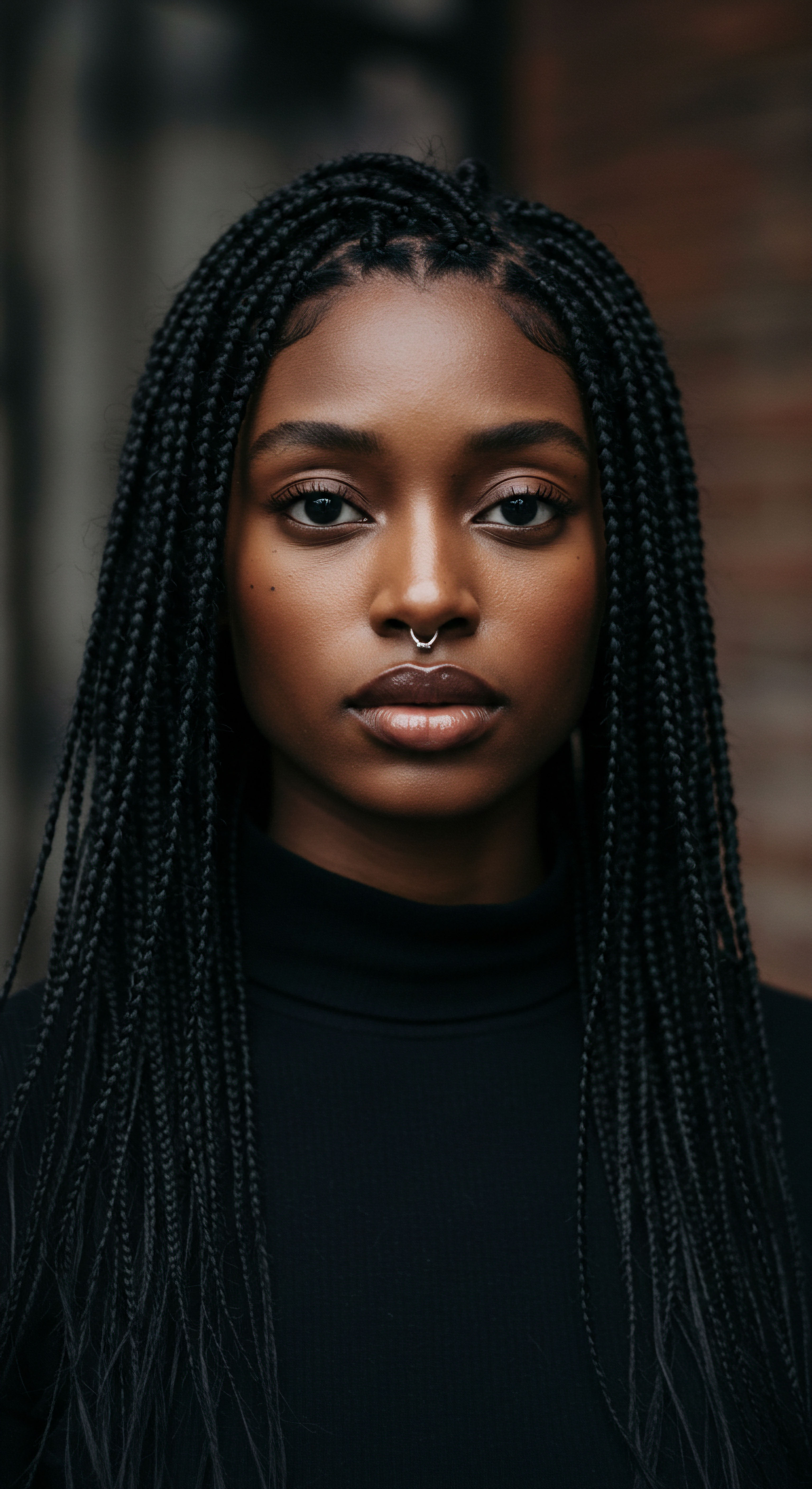
What Spiritual Connections Did Hair Hold?
Beyond social status and survival, ancient African braids were deeply intertwined with spiritual beliefs and cosmological views. Hair, as the highest point of the body, was often revered as the closest part to the heavens, serving as a conduit for spiritual interaction and a means to communicate with divine beings and ancestors. This belief elevated the act of hair styling to a sacred practice, often reserved for close family members or respected spiritual leaders.
Different cultures associated specific braid patterns with deities or used them as a form of protection against malevolent forces. Adornments like amulets and charms woven into the hair were believed to guard against negative energies. The Ashanti people of Ghana, for instance, incorporated Adinkra symbols into their hairstyles, each symbol carrying a specific message or proverb related to wisdom, strength, or unity. The spiritual weight of hair meant that an “undone” appearance in some Nigerian cultures could even signify depression or mental distress, underscoring its profound connection to one’s spiritual and mental well-being.
| Symbolic Category Social Status |
| Meaning Conveyed Wealth, rank, occupation, age, marital status |
| Cultural Context (Examples) Ancient Egypt (wigs, adornments), West African tribes (complexity of style) |
| Symbolic Category Identity |
| Meaning Conveyed Tribal affiliation, family lineage, community role |
| Cultural Context (Examples) Yoruba, Himba, Fulani, Wolof, Mende, Ashanti |
| Symbolic Category Spiritual Connection |
| Meaning Conveyed Link to deities, ancestors, protection from evil |
| Cultural Context (Examples) Yoruba (hair as sacred), Maasai (rites of passage), Adinkra symbols in Ghana |
| Symbolic Category Covert Communication |
| Meaning Conveyed Escape routes, hidden messages, survival aid |
| Cultural Context (Examples) Colombia (cornrow maps), during transatlantic slave trade (seeds, tools) |
| Symbolic Category Life Stages |
| Meaning Conveyed Coming-of-age, marriage, mourning, childbirth |
| Cultural Context (Examples) Yoruba (initiation), Maasai (warrior status), Zulu (puberty, maternity) |
The understanding of ancient African braids, then, extends far beyond their visual appeal. They stand as enduring testaments to the ingenuity, resilience, and profound cultural depth of African societies, where hair was not merely a physical attribute but a dynamic canvas for meaning, history, and life itself.
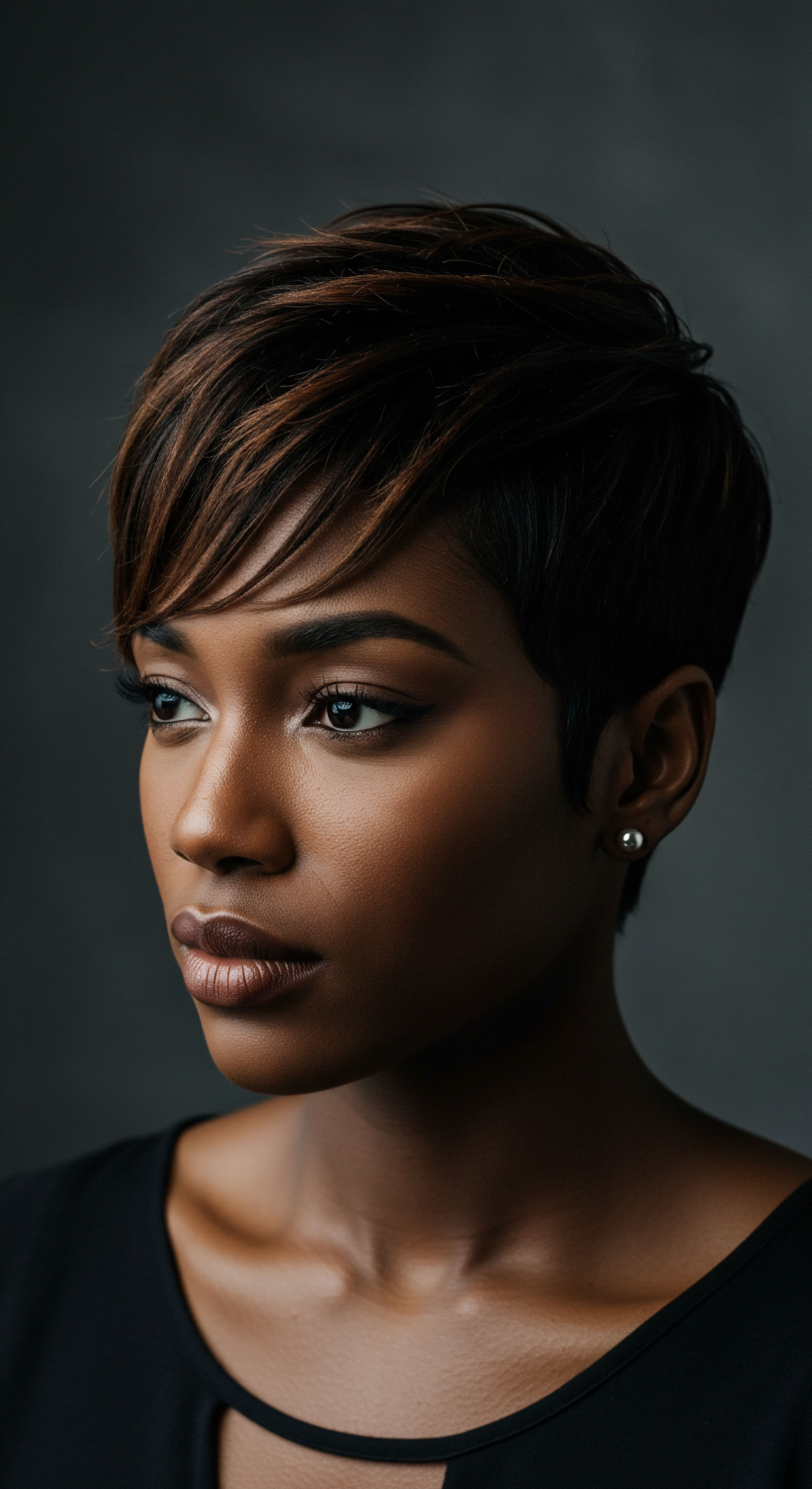
Reflection
The enduring legacy of ancient African braids, reaching across millennia, serves as a gentle whisper of the profound stories held within each strand. It is a testament to the quiet power of cultural continuity, a reminder that beauty, identity, and resilience can be interwoven into the very fabric of daily life. As we reflect upon these intricate traditions, we are invited to consider the timeless wisdom embedded in the art of African hair, a wisdom that continues to resonate with those who honor their textured crowns today.
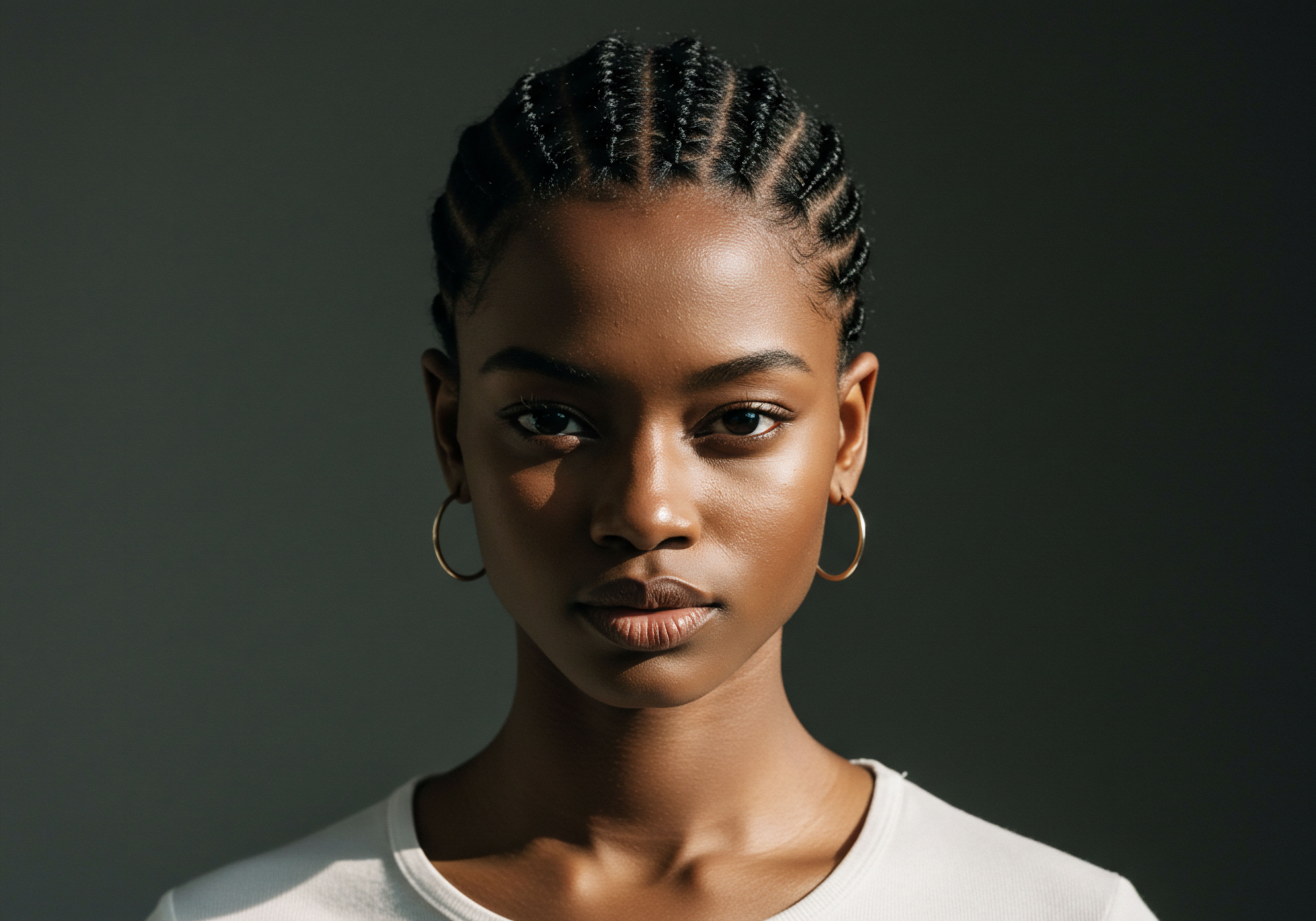
References
- Afriklens. (2024, November 1). African Hairstyles ❉ Cultural Significance and Legacy.
- The Gale Review. (2021, November 23). African Hairstyles – The “Dreaded” Colonial Legacy.
- The History Of Black People Braiding Their Hair. (2023, May 23).
- The Art & Business of African Hair Braiding ❉ A Guide for Modern Cosmetologists. (2025, February 18).
- Black owned business directory. (2019, October 8). The Secret Meaning of the African Cornrows.
- Copyright. (2022, February 16). The Art of Healing ❉ A Nostalgic Ode to Black Hair Braiding.
- Haku Holistics. (2023, November 4). The Art of African Braiding ❉ A Historical Deep Dive.
- Creative Support. (n.d.). The History of Black Hair.
- Khumbula. (2024, April 16). A Crowning Glory ❉ Hair as History, Identity, and Ritual.
- Genesis Career College. (n.d.). History of Braids ❉ More Than Just a Hairstyle.
- OkayAfrica. (n.d.). A Regional Walk Through The History of African Hair Braiding.
- Elom African Braids. (2023, December 21). The History and Cultural Significance of African Hair Braiding.
- Odele Beauty. (2024, January 16). A History Lesson On Hair Braiding.
- Ancient Origins. (2022, November 30). African Slaves Used Braids to Communicate Escape Routes in Colombia.
- AMAKA Studio. (2023, December 7). The History and Culture of African Natural Hair ❉ From Ancient Times to Modern Trends.
- DOLAPO OBAT. (2023, December 17). The Intricate Tapestry of African Braided Art.
- The Carolinian Newspaper. (2025, March 5). How Cornrows May Have Helped Free Slaves Navigate.
- Beds SU. (2022, October 7). Black History Month 2022 ❉ The History Behind Cornrows.
- Doria Adoukè. (2023, May 14). Unveiling the Rich History and Origins of Cornrows.
- Journal of Drugs in Dermatology. (2023, November 30). What Every Dermatologist Must Know About the History of Black Hair.
- Know Your Hairitage. (n.d.). African Culture.
- CBC Radio. (2021, January 28). Tangled Roots ❉ Decoding the history of Black Hair.
- The Braid Gallery. (2025, February 27). The Legacy of Braids ❉ Black History Through the Art of Hair.
- Wits Vuvuzela. (2024, August 29). FEATURE ❉ Braids are more than a hairstyle.
- FunTimes Magazine. (2025, February 23). Hair History – Fulani Braids.
- WebMD. (2025, April 4). Hair Braiding ❉ Styles, Maintenance, and Safety.
- Umthi Beauty. (2022, March 8). The Spiritual Significance of African Hair this International Women’s Day and Beyond.